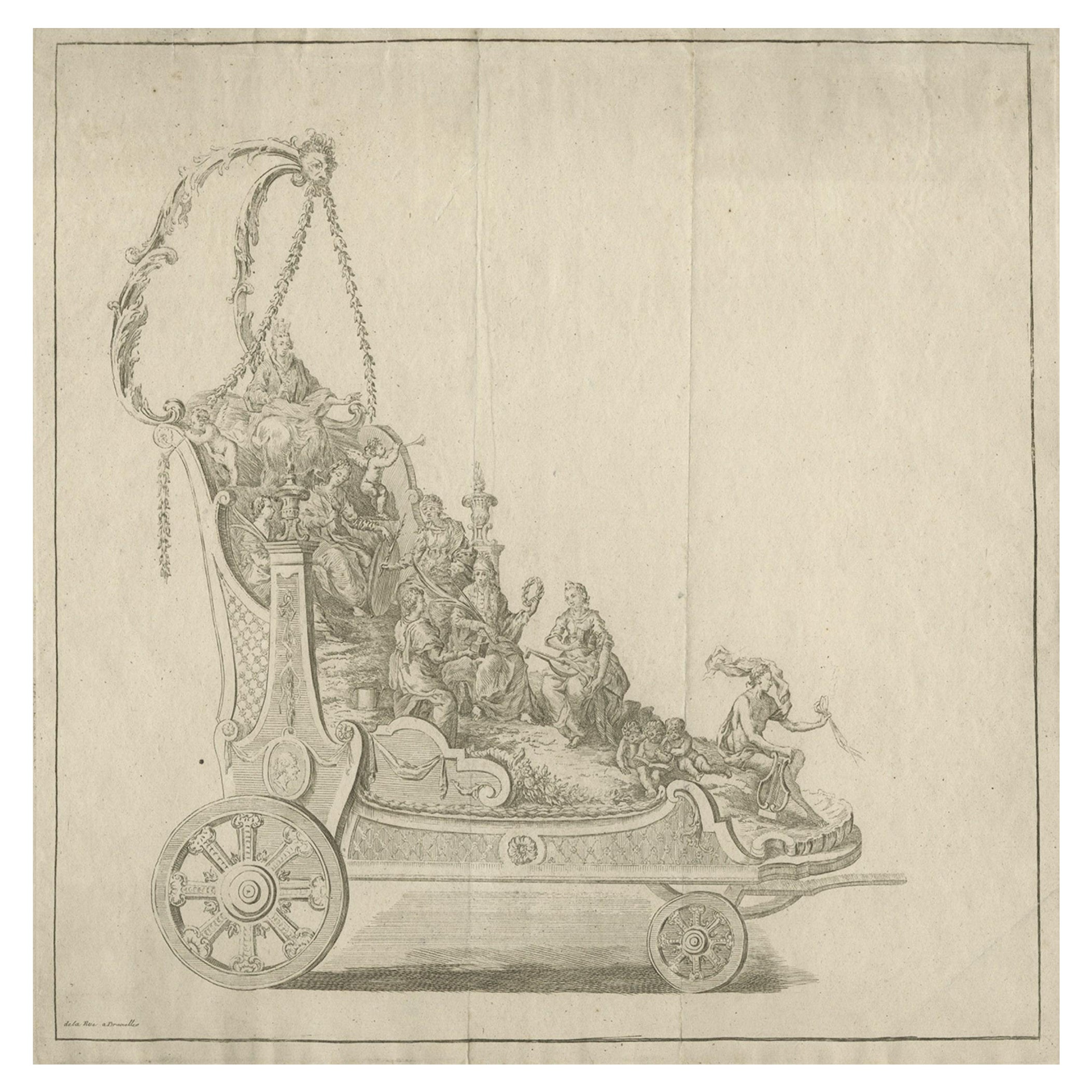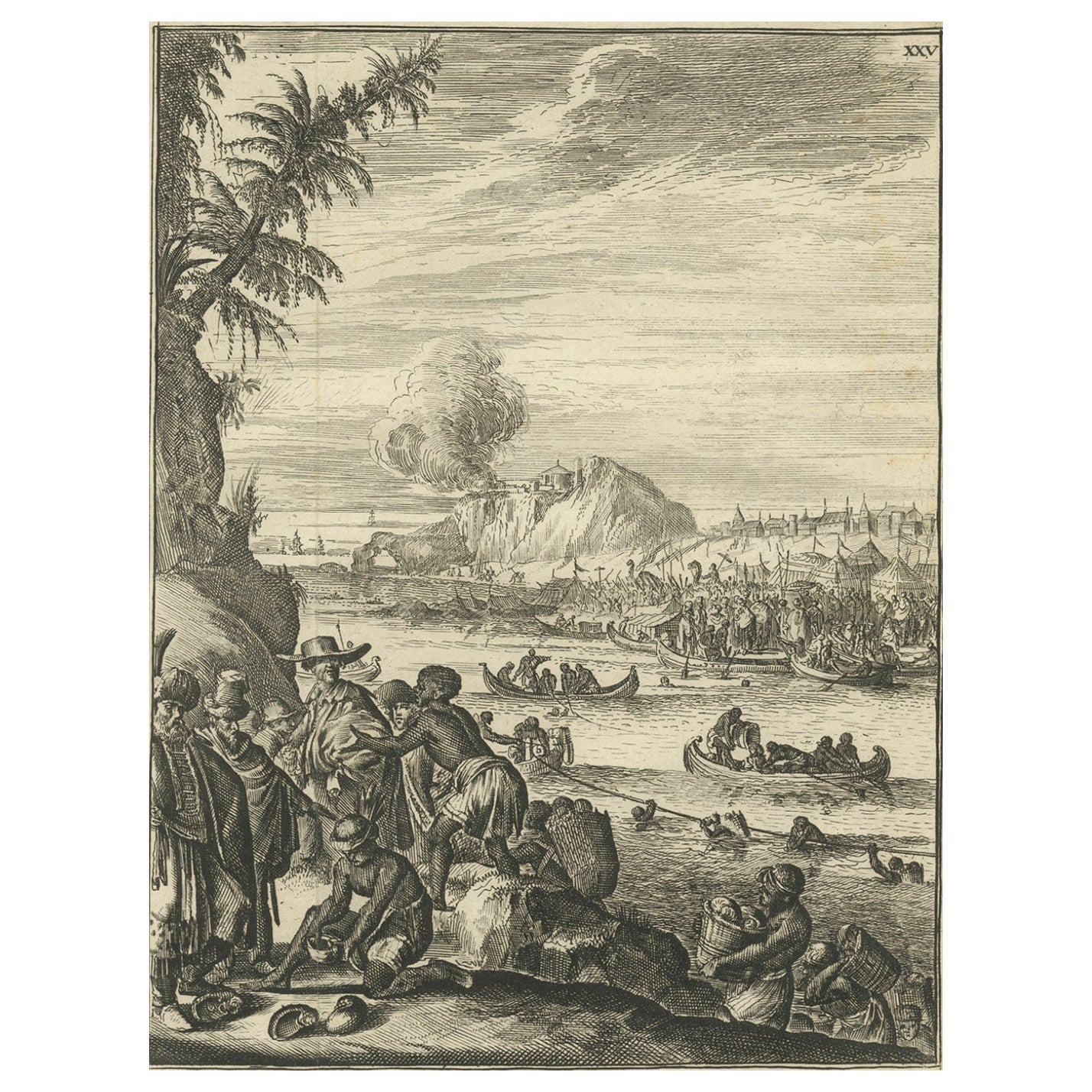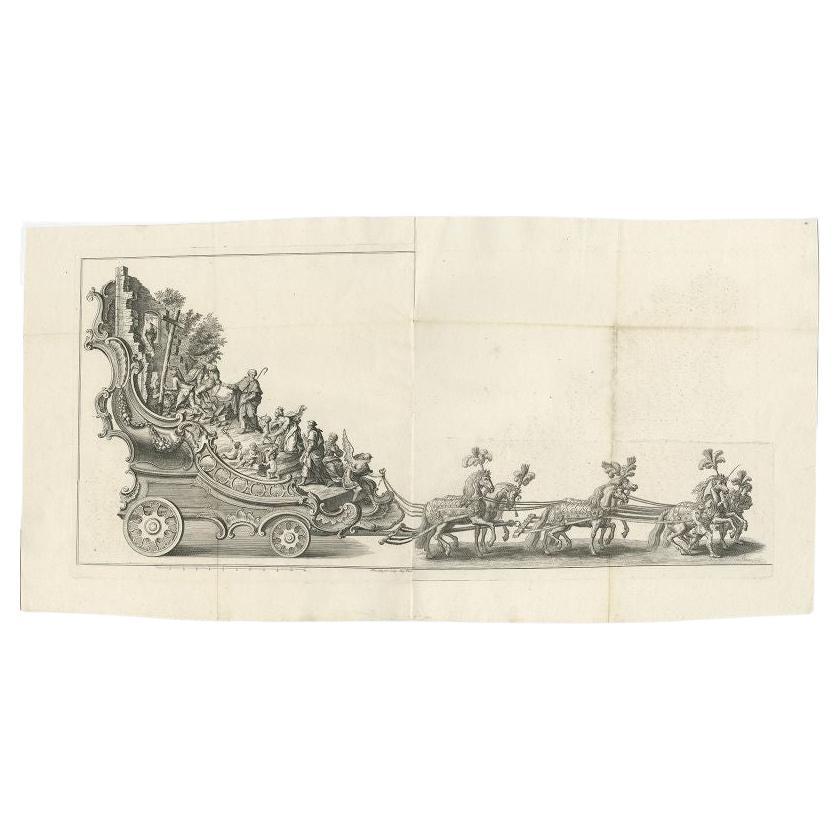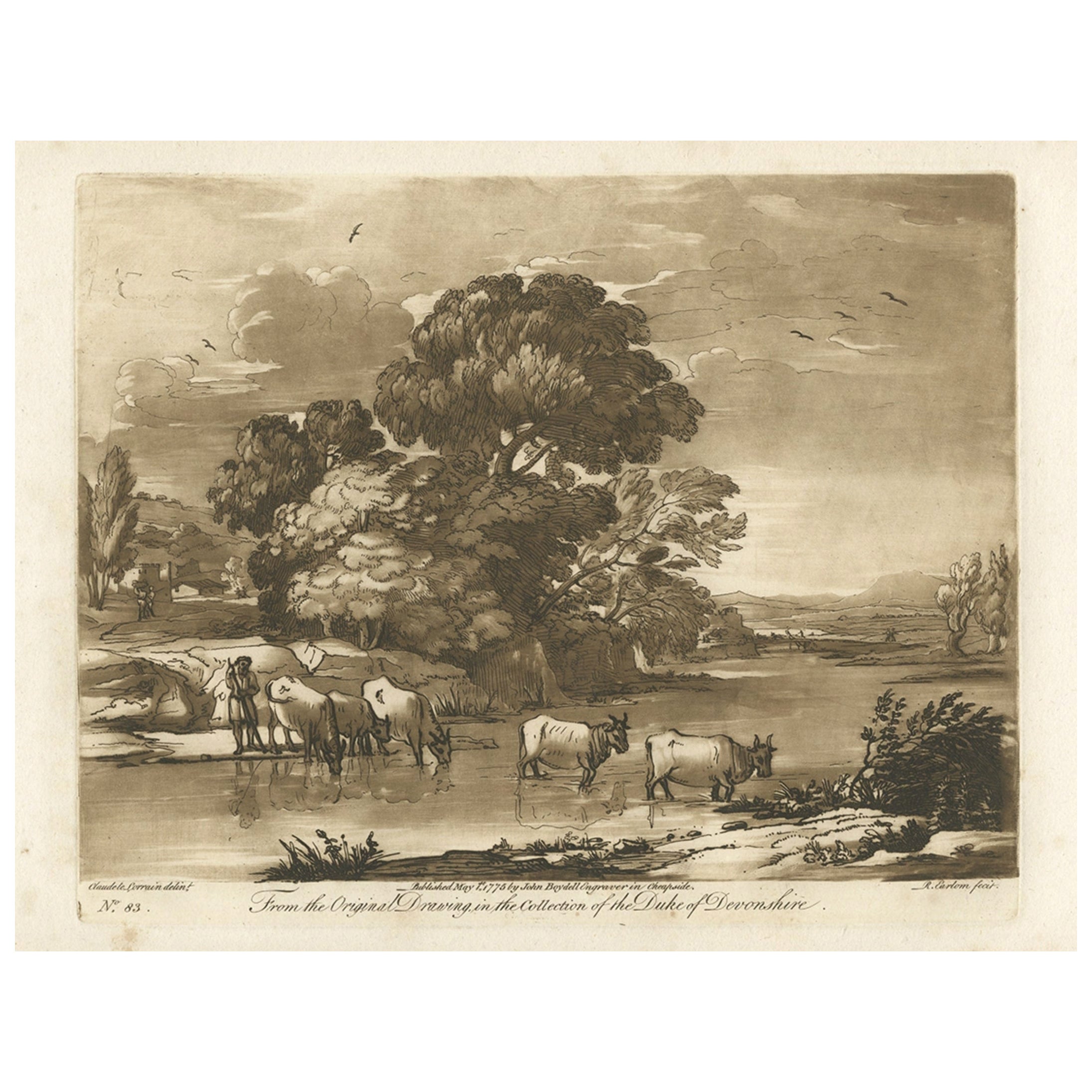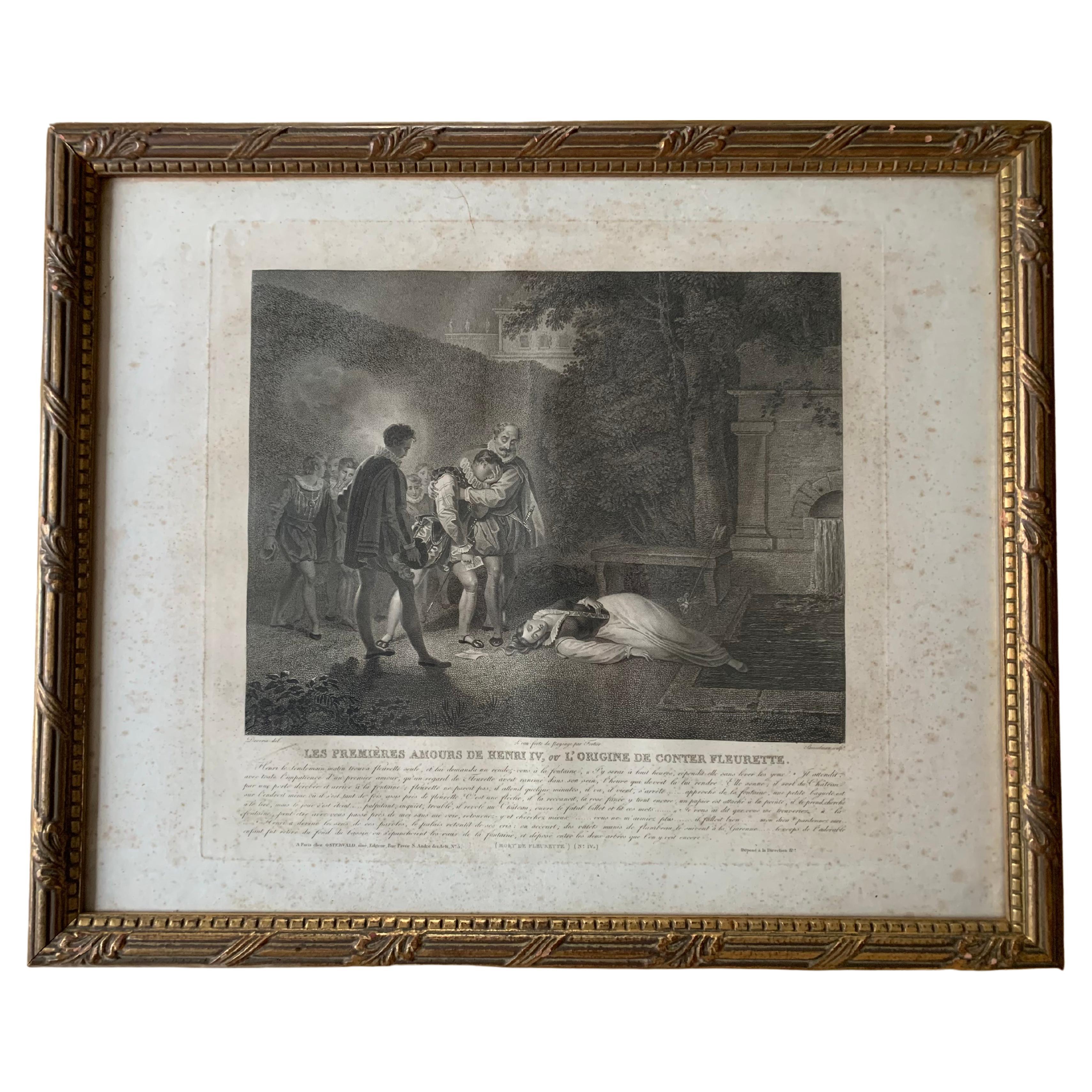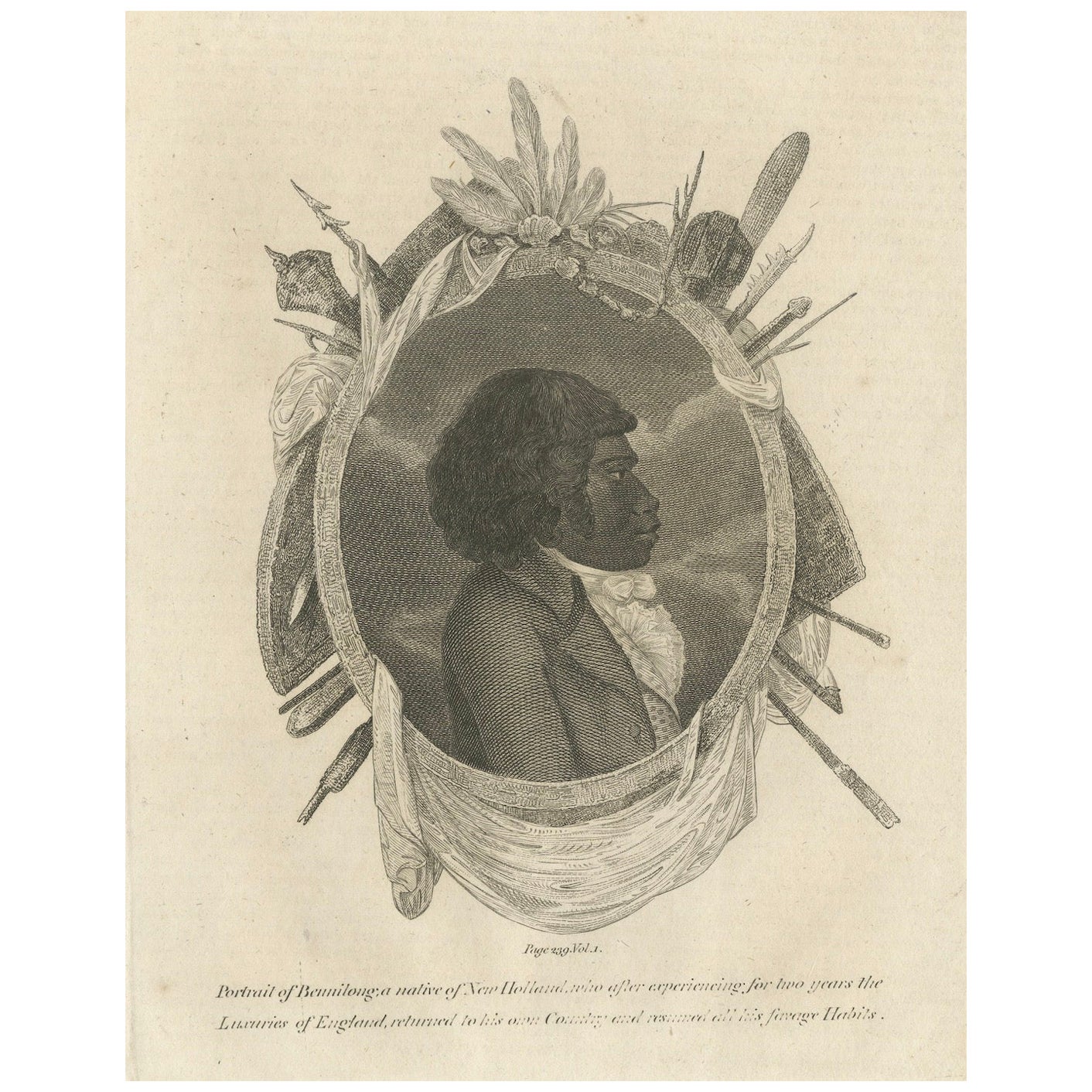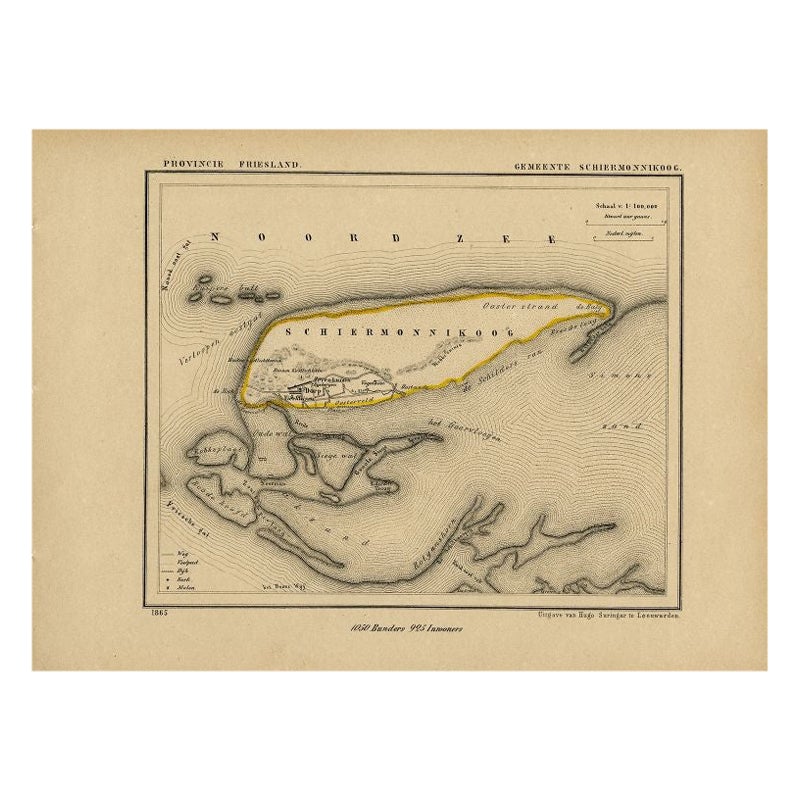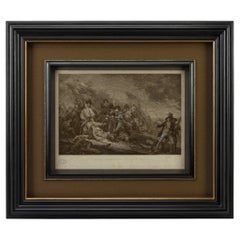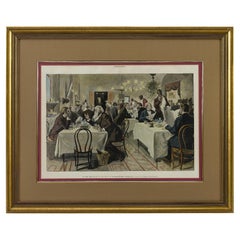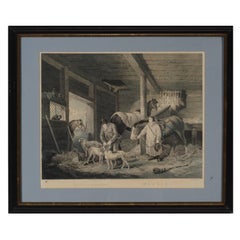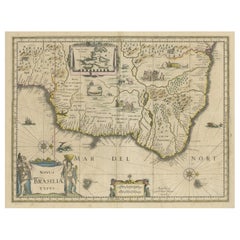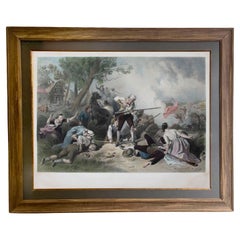
"First Blow for Liberty: To the Memory of the Patriots of 1775" Engraving, 1868
View Similar Items
Want more images or videos?
Request additional images or videos from the seller
1 of 10
"First Blow for Liberty: To the Memory of the Patriots of 1775" Engraving, 1868
About the Item
- Dimensions:Height: 32 in (81.28 cm)Width: 38.5 in (97.79 cm)Depth: 1 in (2.54 cm)
- Style:Federal (In the Style Of)
- Materials and Techniques:Paper,Engraved
- Place of Origin:
- Period:
- Date of Manufacture:1868
- Condition:Additions or alterations made to the original: Archival framing by Rio Grande Custom Framing in Colorado Springs, Colorado in January of 2024. Wear consistent with age and use. Minor fading.
- Seller Location:Colorado Springs, CO
- Reference Number:Seller: PR3941stDibs: LU909737955672
About the Seller
4.9
Platinum Seller
These expertly vetted sellers are 1stDibs' most experienced sellers and are rated highest by our customers.
Established in 2010
1stDibs seller since 2011
400 sales on 1stDibs
More From This SellerView All
- "The Battle of Bunker's Hill, Near Boston" Engraving by James Mitan, 1801By John TrumbullLocated in Colorado Springs, COThis dramatic Revolutionary War engraving of the Battle of Bunker Hill is after the famous 1785 oil-on-canvas by John Trumbull. Capturing the intensity of the battle, the engraving centers on Major John Small restraining a “lobster-back” from bayoneting Major General Joseph Warren. Warren lies mortally wounded in the midst of chaos around him. In the background, British forces are seen cresting the last defenses of the brave, yet green army of Colonial soldiers. The Battle of Bunker Hill was fought on June 17, 1775, in the early stages of the American Revolutionary War. The battle is named after Bunker Hill in Charlestown, Massachusetts. Although it was the original objective of both the Colonial and British troops, the area was only peripherally involved in the battle. Rather, the majority of the combat took place on the adjacent Breed’s Hill. The battle pitted a more organized British force against a young and inexperienced American militia. Although considered a tactical victory for the British, it came at the cost of considerable casualties, including a large number of officers. The battle demonstrated that the inexperienced American militia was able to stand up to the British army troops in battle. The battle results discouraged the British from any further frontal attacks against well-defended front lines. American casualties were comparatively fewer, although their losses included Gen. Joseph Warren. During the battle, the patriot-turned-painter John Trumbull (1756-1843) was stationed in Roxbury on the far side of Boston, where he could hear the sounds of fighting. In late 1785, Trumbull decided to devote himself to the depiction of Revolutionary War scenes, a series of eight epic pictures. From the beginning, Trumbull intended for the paintings to be later engraved for sale. Trumbull began the oil-on-canvas of The Death of General Warren at the Battle of Bunker’s Hill and The Death of General Montgomery in the Attack of Quebec, in the studio of Benjamin West in London. Bunker’s Hill was completed in March 1786; Trumbull started Attack of Quebec in February 1785 and finished it before he brought it to Paris in 1786. He then started The Declaration of Independence at Thomas Jefferson's house in Paris. As soon as Bunker’s Hill was completed, Trumbull searched for a suitable engraver in London. He was unsuccessful, as many British engravers were nervous about engraving an American battle...Category
Antique Early 1800s English Federal Prints
MaterialsPaper
- “The Restaurant of the House of Representatives” Engraving by Harper's WeeklyLocated in Colorado Springs, COThis original wood engraving is titled “The Restaurant of the House of Representatives, Washington, DC.” It was published as a double-page image, in the August 12, 1893 issue of the famous 19th century newspaper Harper’s Weekly. The print was illustrated by Charles Stanley Reinhardt. The House Restaurant, a unique part of life in the Capitol, has been in the same location since the 1857 Capitol Expansion. Congressional members’ busy work schedule made the availability of food on site a necessity. But the restaurant also served as an informal meeting spot for members to continue conversations and deal making. This 1893 print illustrates the convivial atmosphere. Details including elegantly dressed tables...Category
Antique 1890s American Prints
MaterialsPaper
- 1876 "Gettysburg, The Repulse of Longstreet's Assault." EngravingLocated in Colorado Springs, COPresented here is an 1876 engraving of John B. Bachelder and James Walker’s Gettysburg. The Repulse of Longstreet’s Assault. The engraved scene depicts the decisive battle on the final day of the Battle of Gettysburg. Researched by the photographer and topographer John B. Bachelder and painted by James Walker, the original painting was created in 1870. This detailed engraving was done by H. B. Hall Jr. and published by James Drummond Ball. Otherwise called Pickett’s Charge, the battle occurred on July 3, 1863. Pickett’s corp commander, Lieutenant General James Longstreet was placed in charge of the attack despite his hesitations. Longstreet’s central role led to the title of the work, Repulse of Longstreet’s Assault. In an attempt to gain control of an important supply route, nine Confederate brigades charged across three-quarters of a mile of open ground against cannon fire to take Cemetery Ridge from the defending Union Army. Despite their overwhelming numbers, the Confederate forces were repelled with considerable casualties marking not only a decisive victory for the Union, but also the beginning of the slow defeat of Lee’s Army. The furthest the charging forces advanced before being repulsed would forever be known as the “High Water Mark of the Confederacy.” The Confederate army never recovered from the losses at Gettysburg and it effectively ended Lee’s campaign into Pennsylvania. The engraving gives the perspective from the Union rear, one that encompasses most of the battlefield, from Big Round Top on the left to the northern reaches of Cemetery Ridge on the right. The Confederate lines at Seminary Ridge are in the far distance, partially obscured by bursting shells. The image centers on the main Confederate assault, in the vicinity of what today are known as "The Copse" and "The Bloody Angle." The composition has elemen...Category
Antique 1870s American Prints
MaterialsPaper
- "Rough Shooting" First Edition Antique Engraving by Douglas Adams, circa 1893By Douglas AdamsLocated in Colorado Springs, COThis is a first edition print of Rough Shooting, signed by the artist, Douglas Adams. The print was published by Thomas McLean and depicts a highlands s...Category
Antique 1890s British Prints
MaterialsPaper
- "Raising the Liberty Pole" Hand-Colored Antique Print, 1875Located in Colorado Springs, COThis nineteenth-century engraving shows a liberty pole being raised in a town square in 1776, while a sign bearing the face of King George III is removed in the background. The rioto...Category
Antique 1870s American Historical Memorabilia
MaterialsPaper
- 1864 "Proclamation of Emancipation, " Antique Engraving by Charles ShoberLocated in Colorado Springs, COThis 1865 engraving features the Emancipation Proclamation in elaborate calligraphic text, with five patriotic vignettes and a small portrait...Category
Antique 1860s American Historical Memorabilia
MaterialsPaper
You May Also Like
- Original Colored Engraving of the Norway Lemming, 1775Located in Langweer, NLOriginal antique hand-colored engraving of the Norway Lemming, originating from "Die Säugethiere in Abbildungen nach der Natur mit Beschreibungen," which translates to "The Mammals...Category
Antique 1770s Prints
MaterialsPaper
- The First of September "Morning" Engraving, 1799Located in Carmel, CAMezzotint engraving, 1799, The First of September, after painting by George Moreland. Moreland was a noted London landscape and genre painter. By the...Category
Antique 1790s English Georgian Prints
MaterialsPaper
- Old Color Engraving of Blaeu's first Map of Brazil, North Oriented to the RightBy Willem BlaeuLocated in Langweer, NLAntique map titled 'Novus Brasiliae Typus'. Fine old color example of Blaeu's first map of Brazil, with north oriented to the right. Includes inset map of Baya de todos Santos, elaborate cartouche, 2 compass roses and richly embellished vignettes of native Brazilian life and animals. The interior of the map includes vignettes of indigenous animals and native scenes, including cannibalism. Inset within a decorative border is a small map of "Baya de todos Sanctos". In the sea are monsters, a galleon and two compass roses. The large title cartouche features a male and female Brazilian, both of whom are shown naked. Willem Janszoon Blaeu (1571-1638) was a prominent Dutch geographer and publisher. Born the son of a herring merchant, Blaeu chose not fish but mathematics and astronomy for his focus. He studied with the famous Danish astronomer Tycho Brahe...Category
Antique Mid-17th Century Maps
MaterialsPaper
- Antique Engraving of a Religious Float for Saint Rumoldus or Rumbold, 1775Located in Langweer, NLAntique print of a float with religious figures. This print originates from 'Prael-treyn [...] toegeschikt aen het duyzend-jaerig jubilé van [...] den heyligen Rumoldus'. Artists and Engravers: Published by Joannes Franciscus vander Elst. Condition: Fair, age-related toning. Original folding lines, some wear and small defects. Blank verso. Please study image carefully. Date: 1775 Overall size: 35.5 x 30 cm. Image size: 28 x 28.5 cm. We sell original antique maps to collectors, historians, educators and interior decorators all over the world. Our collection includes a wide range of authentic antique maps...Category
Antique 18th Century Prints
MaterialsPaper
- Rare Original Antique Engraving of Pearl Fishing, 1775Located in Langweer, NLAntique print titled 'Parel-Visschery, en hoe die geschiet'. Copper engraving of pearl fishing in Tutocoryn and Pallpatnam (Tamil Nadu, India, Gulf of Manar, Palk Bay.) This print or...Category
Antique 18th Century Prints
MaterialsPaper
- Rare Antique Religious Engraving of a Horse Drawn Float, 1775Located in Langweer, NLAntique print of a horse drawn float with religious figures. Double page with joined sheets and original folding lines. This print originates from 'Prael-treyn [...] toegeschikt aen ...Category
Antique 18th Century Prints
MaterialsPaper



